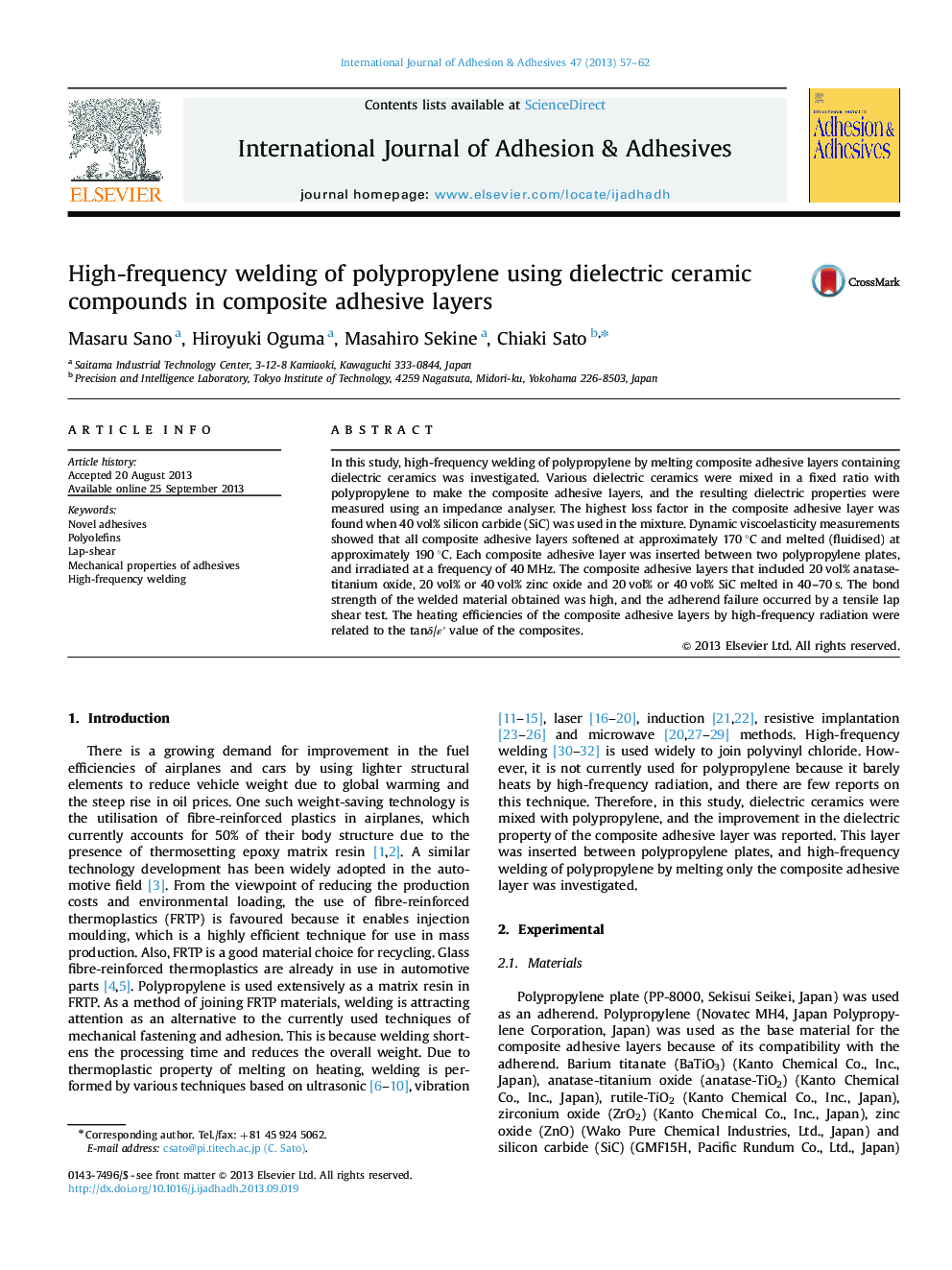| Article ID | Journal | Published Year | Pages | File Type |
|---|---|---|---|---|
| 776802 | International Journal of Adhesion and Adhesives | 2013 | 6 Pages |
In this study, high-frequency welding of polypropylene by melting composite adhesive layers containing dielectric ceramics was investigated. Various dielectric ceramics were mixed in a fixed ratio with polypropylene to make the composite adhesive layers, and the resulting dielectric properties were measured using an impedance analyser. The highest loss factor in the composite adhesive layer was found when 40 vol% silicon carbide (SiC) was used in the mixture. Dynamic viscoelasticity measurements showed that all composite adhesive layers softened at approximately 170 °C and melted (fluidised) at approximately 190 °C. Each composite adhesive layer was inserted between two polypropylene plates, and irradiated at a frequency of 40 MHz. The composite adhesive layers that included 20 vol% anatase-titanium oxide, 20 vol% or 40 vol% zinc oxide and 20 vol% or 40 vol% SiC melted in 40–70 s. The bond strength of the welded material obtained was high, and the adherend failure occurred by a tensile lap shear test. The heating efficiencies of the composite adhesive layers by high-frequency radiation were related to the tanδ/ε′ value of the composites.
